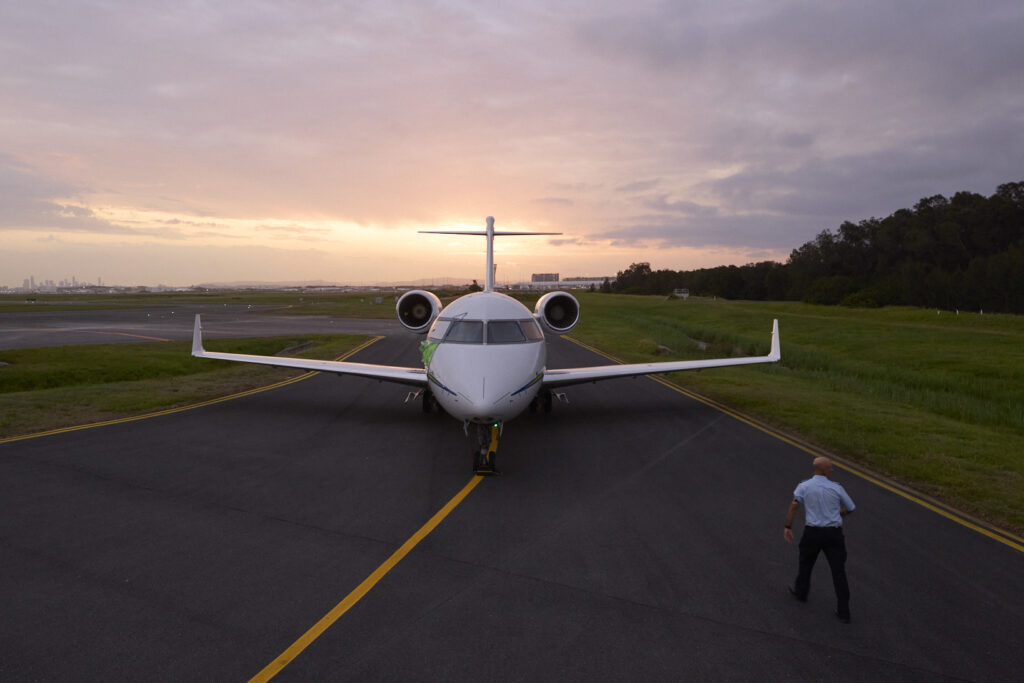Key Stats Toowoomba and Roma: FY24
- 1061 missions in FY24
- 949 people helped (up 19% on FY23)
- Toowoomba again busiest base rescuing 891 people (up 22% on FY23)
- 8,177 people helped across the LifeFlight network (up 11.2% on FY23)
Toowoomba is LifeFlight’s busiest base with the LifeFlight rescue and LifeFlight Surat Gas Aeromedical Service (SGAS) chopper crews coming to the aid of a record 891 people in the past Financial Year.
It contributed to an overall record 8,177 people helped by LifeFlight in FY24 – more than 11 per cent higher than the previous year.
LifeFlight’s fleet of helicopters, air ambulance jets and specially trained medical teams, including LifeFlight critical care doctors, flight nurses and Queensland Ambulance Service (QAS) paramedics, helped patients with a range of illnesses and injuries.
Toowoomba is home to two rescue helicopters, which recorded a 22 per cent increase in people airlifted on the previous period.
They were tasked to a wide range of missions including motor vehicle accidents, snake bites, lost bushwalkers, and animal-related incidents, all while servicing a vast area from the Darling Downs to interstate.
The crews clocked up 996 flying hours and 965 missions, covering a vast territory spanning 71,000 square kilometres.
Meanwhile, the Roma SGAS crew, based at the Lee Family and Australian Country Choice LifeFlight Centre., helped 58 people and notched up 168 flight hours.
The SGAS partners generously donate 150 flying hours each year to assure the Toowoomba and Roma communities of aeromedical coverage.
SGAS missions included one in June where the crew airlifted a teenage girl to Toowoomba Hospital after she fell from her horse and was then trampled as she lay on the ground. The teenager was treated for suspected spinal injuries and was airlifted l in a stable condition.
In May, the SGAS crew was called out to the Lockyer Valley after a bushwalker made an emergency call when he was bitten by a snake. The helicopter crew landed in a clearing near the ridge line before the aeromedical rescue crew walked 600 metres into the bush to locate the man, treat him at the scene, and stretchered him out to the helicopter.
The Toowoomba crews also attended numerous motor vehicle accidents during FY24, which included a multi-vehicle crash on a highway in the Western Downs.
The LifeFlight rescue and SGAS helicopters landed on the highway and LifeFlight critical care doctors with Queensland Ambulance Service (QAS) paramedics treated the patients on scene before both patients were flown to hospital.
The crew also attended a number of incidents at local motocross parks where riders sustained injuries after crashing their motorcycles.
Top 4 aeromedical missions* in FY24:
- MVAs – 102
- Cardiac – 94
- Animal-related – 39
- SAR – 11
*By people helped
LifeFlight Chief Operating Officer Lee Schofield, said the Toowoomba and Roma crews demonstrated a high degree of aeromedical excellence during the past financial year.
“The missions run the gamut of emergency care and rescue operations and show how our crews face vastly different situations with fortitude and strength,” he said.
“It demonstrates how crucial LifeFlight’s operations are in helping people who need emergency medical assistance in often remote locations far from major cities and hospitals.
“We couldn’t be prouder of how our critical care doctors, paramedics and air crew have conducted themselves this past year often in very trying circumstances. They rescue people across regional Queensland and for that we owe them a debt of gratitude.”
LifeFlight Medical Director Dr Jeff Hooper, said the organisation continued to lead the way in the aeromedical sector with world-leading standards of care.
“This is often while our crews deal with extremely challenging conditions, whether that is stabilising a patient mid-air, winching down a paramedic to the side of a cliff face, or rescuing people stranded in the ocean,” said Dr Hooper.
“Our teams have the specialist emergency medicine skills required to provide the best available treatment to people, who are often in remote locations, while battling the elements.
“Our critical care doctors, nurses and paramedics are a mobile intensive care team, and their rapid aeromedical intervention can often mean the difference between life and death. That’s why the work is so important to hundreds of thousands of people living in regional Queensland communities.”
Since taking to the skies 45 years ago LifeFlight has helped close to 90,000 people.
LifeFlight rescue helicopters contribute to the Queensland Emergency Helicopter Network via a fully costed agreement with the Queensland Government which came into effect April 2024.











